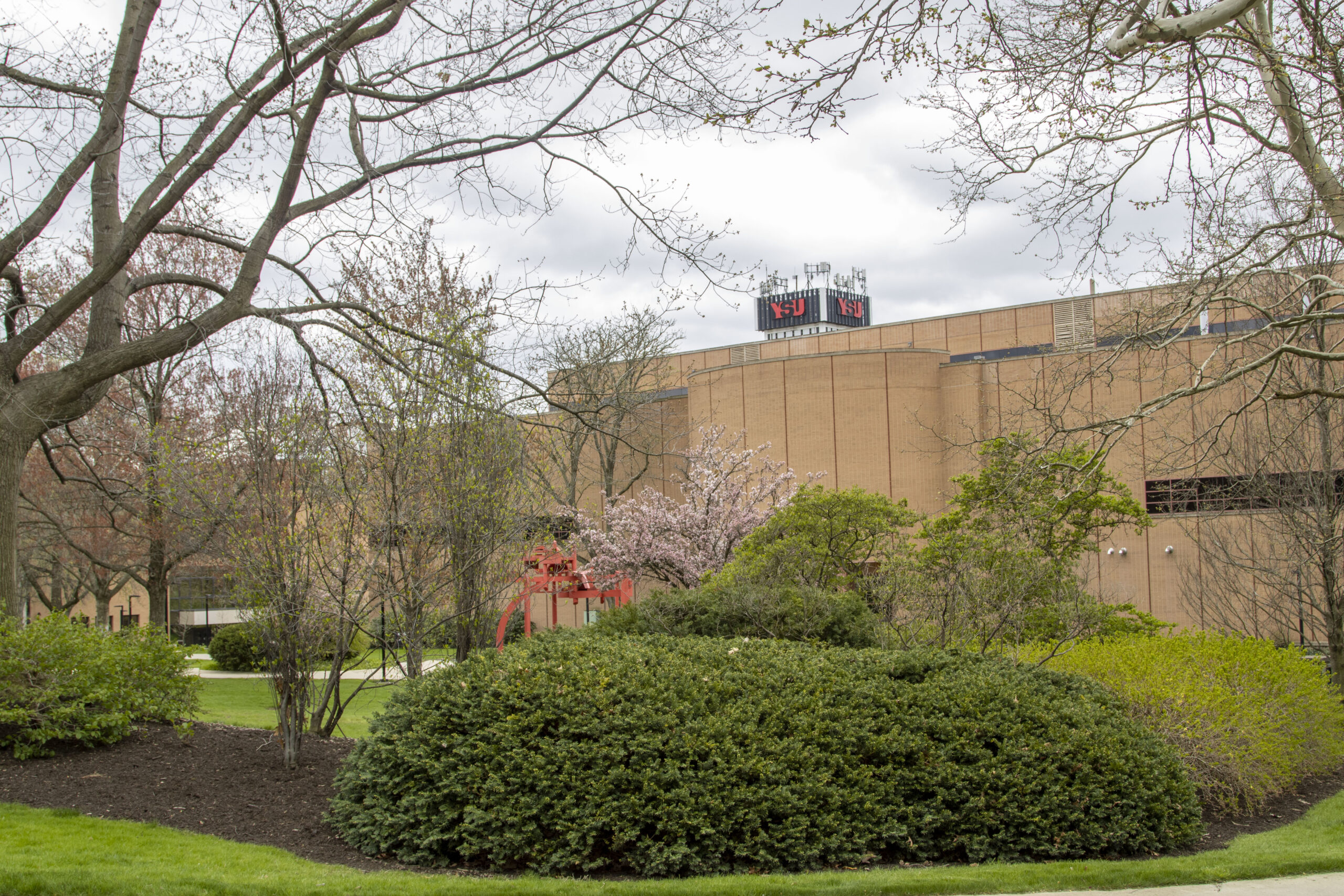By Henry Shorr
During an academic senate meeting April 6, Youngstown State University’s design committee proposed and unanimously passed a plan to get the campus certified as a wildlife habitat.
The National Wildlife Federation’s Campus Wild program aims to return campus spaces to what they resembled before colleges were there. According to its website, “Campus green spaces can provide homes and havens for wildlife. Wild species, which face many challenges from urban sprawl and climate change, need ample space that will be well protected and maintained to ensure they can survive and thrive.”
David Mizejewski, naturalist and media spokesperson for the NWF, said this program is aimed at protecting and reducing our footprint on local wilderness. He explained that the wildlife habitat certification project is a part of a larger program called Garden for Wildlife.
“Plants are the foundation of wildlife habitat. Not just any plants — it’s specifically the native plants that wildlife co-evolved with over hundreds of thousands, or even millions of years, and their life cycles are in tune with each other,” Mizejewski said. “The whole concept behind Garden for Wildlife — that we’re trying to encourage people to do — is plant more of these native plants in our backyard gardens, at our workplaces [and] at our places of education.”
Assistant professor Jonathan Farris spoke on behalf of the design committee on what steps the university would need to take. He explained that YSU would need to cut down on mechanical lawn mowing — as the mowers used now are all gas-powered. According to Farris, another way to reduce mowing needs is landscaping with clover, loam and beds of native perennials.
According to Mizejewski, these are the steps the school should be taking for the NWF to certify YSU. He said there are four core elements that make a wildlife habitat successful: Food, water, cover and resources to reproduce and raise young.
“Your plants are going to do the bulk of the work in providing those habitat elements. Pretty much, native plants are going to provide natural sources of food for wildlife,” Mizejewski said. “Native plants also are going to support the animals lower on the food chain like insects, you know, insects are important wildlife in and of themselves that deserve to exist.”
These insects provide a significant source of nutrition for native wildlife. For example, according to Mizejewski, 96% of terrestrial birds feed their young caterpillars, and the American bird population is down 3 billion in the last 50 years.
Farris also spoke about the need to continue removing invasive species from campus, a process that has already started. These include certain trees, weeds and other plants, but they also include animals like stray cats that kill native species.
Mizejewski expressed that, while the number of stray cats on campus would not impede YSU’s ability to get certified, tackling that project would be a helpful step in the conservation of native species, which is the ultimate goal of the program. Youngstown has already been taking the steps he suggested, including spay-and-neuter projects and adoption programs.
During the meeting, Susan Clutter, associate professor of chemical and biological sciences, asked about the potential for student involvement in this process. Farris told her that the committee really wants to leave a lot of the planning open-ended right now; however, he sees plenty of opportunity for that in the future.
“I think we want to leave room to be open to all sorts of … educational usages of these processes,” Farris said. “I can assure you, in our discussions of the digital app that we would definitely be using students to help generate the content for that.”
Mizejewski offered some ideas as to how to get people involved in the conservation process.
“Planting days or cleanups on campus, invasive weed removal — that engages the campus volunteer community. I think that’s one thing that sets apart campuses from, like, your typical private properties,” he said.
Mizejewski explained that while the certification process is not intense, it is still a meaningful and impactful effort that has a massive benefit for the local community.
“This is … kind of a local level of conservation action. You know that old saying, ‘Think globally but act locally.’ This whole concept of Garden for Wildlife is the epitome of that,” he said. “When the campus community comes together and plants a pollinator garden, you’re probably, sometimes even within that same day, going to see the impact on wildlife, and that I just find to be really powerful and meaningful.”
For more information on these habitats, specifically campus wildlife habitats, check out “The Campus Wild” on the NWF’s website.
